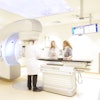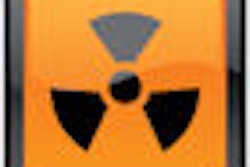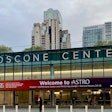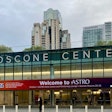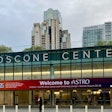As the sun-worshiping baby boomer generation ages throughout the world, the incidence of epithelial cancer is increasing. For patients with this skin disease, electron beam radiation therapy (EBRT) provides an excellent alternative to surgery, according to a new study published online in Radiotherapy and Oncology.
A wide range of treatment options are available to treat basal cell carcinomas and squamous cell carcinomas, including surgical excision, cryotherapy, photodynamic therapy, and topical treatment. However, radiation oncologists at Leiden University Medical Center in Leiden, Netherlands, recommend the use of EBRT.
Dr. Marjan van Hezewijk and colleagues conducted a retrospective study to evaluate the efficacy of EBRT for epithelial skin cancer and to compare the treatment outcomes of two electron beam fractionation schedules (Radiother Oncol, March 24, 2010). They analyzed the cosmetic and disease-free outcomes of more than 400 cases, finding that effective radiotherapy treatment can be administered in as few as 10 treatments.
Between January 2001 and December 2006, 333 patients received EBRT for a total of 332 basal cell and 102 squamous cell carcinomas. More than 80% of the tumors treated were located on the head, with 59.4% located on the face. The patients were nearly evenly divided by sex, and they ranged in age from 38 to 96 years, with a median age of 74.8 years for patients with basal cell carcinomas and 78.3 for those with squamous cell carcinomas.
During calendar years 2001 through 2003, 159 patients received a total treatment dose of 54 Gy in 18 fractions of 3 Gy, administered four days a week. Starting in 2004, treatment of 44 Gy in 10 fractions of 4.4 Gy four times per week became the standard treatment, because it was an easier treatment for elderly patients and had a similar cosmetic outcome, based on results of a pilot study. A total of 275 patients received this latter treatment during the entire study period.
The patient cohort was followed for a median of 42.8 months. The range for the 54-Gy group was 19.2 to 87.6 months, and the range for the 44-Gy group was 1.4 to 71.9 months.
Cosmetic outcomes
A total of 14 patients were selected to participate in a pilot study to assess the cosmetic effects of each fractionation schedule. For each patient, the irradiated area was photographed before treatment. Photos were taken a median of 22 months after treatment for the 44-Gy group and a median of 5.5 years for the 54-Gy group. Scoring was rated good, fair, or poor based on pigment change, telangiectasia, and skin fibrosis.
Patients evaluated their own post-treatment appearance, and a group of 10 independent observers, half of whom were physicians, did so as well. No significant difference in cosmetic outcome was found between the treatment groups.
Between 62% (54 Gy) and 67% (44 Gy) of the patients felt they had good cosmetic results; 13% and 33%, respectively, felt they had fair outcomes; and 25% of the 54-Gy group only felt they had poor outcomes. The observers were more critical, rating half of the patients in both groups with a "fair" score, and less than 40% for each group with a "good" score.
Disease-free recurrence
The authors report a total of 15 local recurrences, with five in the 54-Gy group and 10 in the 44-Gy group, for an actuarial three-year rate of 97.5% and 96.1%, respectively. Tumor size and stage was a significant risk factor for local recurrence, which occurred approximately six months after treatment.
Five patients (1.5% of the total) developed metastases, with three identified in regional lymph nodes and two at distant sites. Three-year cancer-specific survival rates were 98% for patients with squamous cell carcinoma and 100% for patients with basal cell carcinoma.
Although it's already standard treatment, the study validates the efficacy of hypofractionated EBRT delivering 44 Gy in 10 treatments, and it can be regarded as the optimal therapy for T1-T2 epithelial skin cancer, the authors report.
By Cynthia E. Keen
AuntMinnie.com staff writer
March 31, 2010
Related Reading
SNM study: Radioactive skin patches treat basal cell carcinoma, June 15, 2009
Occupational exposure to radiation raises skin cancer risk, July 12, 2005
Copyright © 2010 AuntMinnie.com

